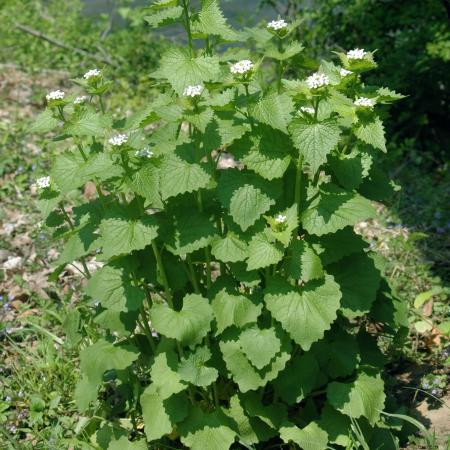Invasive Species: Garlic Mustard
Alliaria petiolata
Garlic mustard was brought from Europe in the 1800s for food and medical uses.
It was first documented in 1959 in Multnomah County.
Why is it important to control?
Garlic mustard produces a prodigious amount of seeds. These germinate and grow earlier in the spring than natives, blocking sunlight and outcompeting the native plants for moisture and nutrition. By completely blanketing the area they exclude habitat for native species such as trilliums, wild ginger, and others. Garlic mustard’s roots release chemicals that disrupt the important fungal network in the soil, inhibiting growth in important species like trees.
How can you identify it?


| Habitat: | Moist to dry forest areas, streamside, flood plains, forest edges, roadsides, disturbed lands |
| Life Cycle: | Biennial – rosette 1st year, flowering 2nd year |
| Height: | 1-4ft |
| Leaf Description: | Rosette’s have round, heart shaped leaves. Flowering stalk leaves are more triangular. Both have round, toothed edges. |
| Fruit & Flower Description: | Four petaled white flowers in button-shaped clusters. Fruits are slender, upright capsules. |
| Bloom Time: | Early spring |


